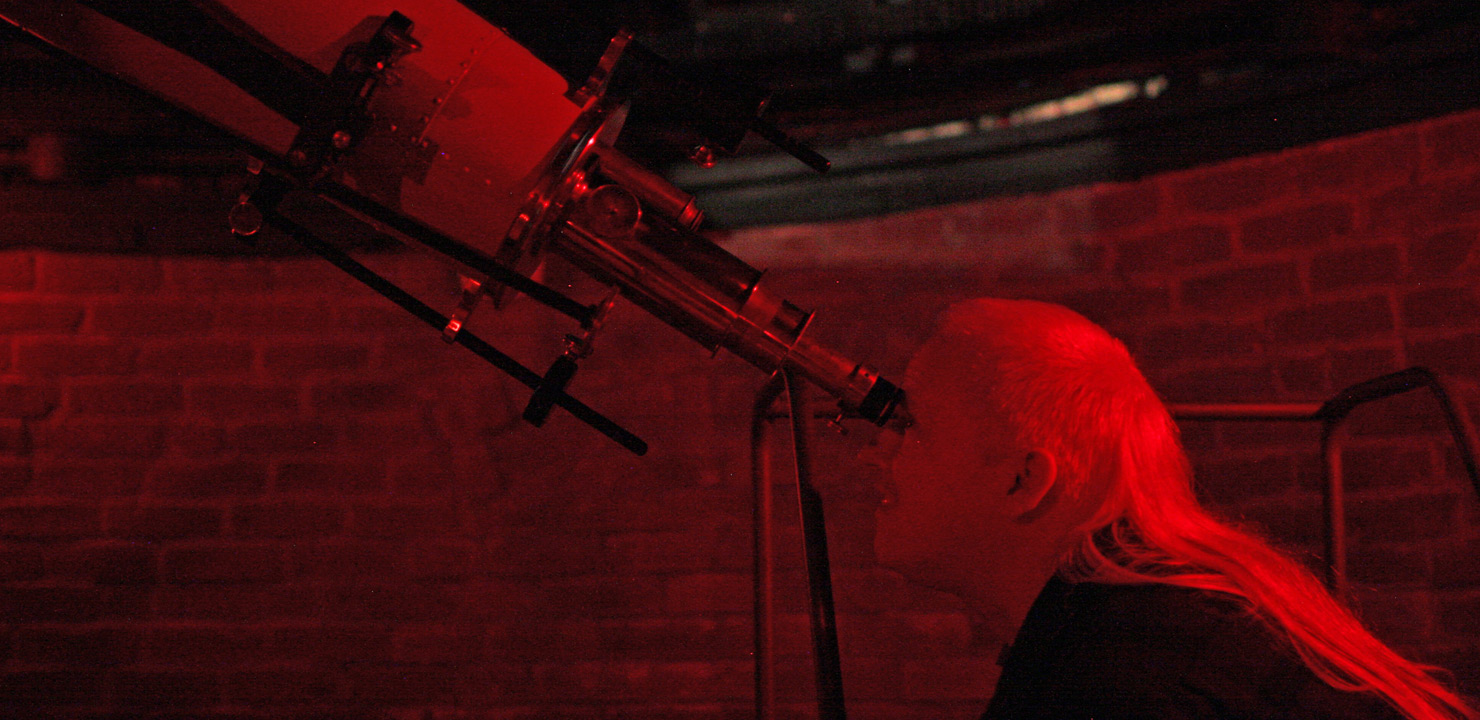
2 Planet Night
by Matt White & Steve Siok
Saturday afternoon held clear skies and it looked as if the weather would cooperate for the evening’s observing session. By the time I arrived at Seagrave, Bob Horton and Steve Siok were about halfway through prepping the Clark. Jim Hendrickson arrived a few minutes later and we finished opening the observatory.
Jupiter was still visible above the tree line, so we trained the scope over. One of the moons, Io I believe, was just emerging from behind the gas giant. Some disturbance was evident in the atmosphere so we kept the magnification down to 108x. A few guests had arrived so we kept the Clark trained on Jupiter until it disappeared below the trees. Expecting a large crowd, Steve proceeded to open the 12” Meade.
As Jupiter became obscured by the tree line, (with Jim’s help) I trained the scope up to Algieba or Gamma Leonis, a double star approximately 170 light years away. This golden pair of stars, has a separation of 5 arc seconds and magnitudes of 2.4 and 3.6 respectively. It was easily resolved at the same magnification we had used on Jupiter.
After everyone had taken a turn at the eyepiece, Bob maneuvered the Clark over to Iota Leonis, a double which I was not familiar with. This one presented a bit more of a challenge as the separation is 1.7 arc seconds and the respective magnitudes are 4.1 and 6.7. For this object, we selected a 12.5 mm eyepiece which gave us a magnification of 213x. At first, the pair was somewhat difficult to resolve, but the seeing began to improve and the split could easily be seen.
By now, Saturn had cleared the eastern tree line and we turned our attention to the ringed wonder. The seeing had improved enough to keep the power at 213 and the Cassini Division was clearly visible as well as the less pronounced (as compared to Jupiter) atmospheric banding. Six of the moons in the Saturnian system were also visible. Jim had a 2.5mm eyepiece with him and we tried it on the Clark with provided a magnification of 1066x. This was clearly pushing the limits of the instrument, however there were times when the seeing would clear enough to catch a glimpse of detail in the image; a testament to the quality of the optics in the Alvan Clark refractor.
Turnout was lighter than I would have expected for a clear night but we provided a view of the heavens for at least a dozen or so people by the time we closed down at around 11:00 pm.
Report submitted by Matt White
Steve Siok ran the 12” Meade. There was a constant but small stream of people, perhaps 18 in all, that came by and observed with us.
Because of the trees we were not able to observe Jupiter but we searched for objects while we waited for Saturn to rise.
We observed several double stars but the favorite of the group was Epsilon Bootes. This system is separated by only 2.7 “ and the two stars, 2.5 mag. A and 5.0 mag. B, were quite easy to split, although the guests needed prodding to look carefully to see how close they were to each other. The striking color difference, orange and blue/green, helped them spot the two stars.
We observed two globulars, M3 and M53. The surface brightness of M53 was rather low and although people could see it in the 12” it was a struggle. M3 showed much better and people were able to see individual stars at the edge, not so much so at the center. We tried to look at some galaxies, M65 and M66, as well as M51, but the night was too bright for them to actually show up. I chose not to show them to the public.
Saturn was the treat of the night. A gentleman had brought his daughter specifically to see it and she was thrilled. Observed with an 18mm eyepiece so there was a bit of power on the 12” f10. We also tried observing with both an orange and a light green filter. The group preferred the orange filter to either unfiltered or the green.
Folks started to give up about 10:45 so we locked up and called it a night.
Submitted by Steve Siok



